doméstico-microliving triggers traditional dwelling limit with a single shape
Doméstico is Designed by Juan Alberto Andrade and María José
Váscones
Photographed by JAG studio, Doméstico – Microliving presents itself as a connection between architecture and furniture design, in which the project is created in relation to the changing needs, and the constant reduction of space. By questioning the traditional dwelling limits, architects Juan Alberto Andrade and María José Váscones impose a contemporary domestic living in Ecuador, where physical and social flexibility based on personal relationships are predominant. The design of the mobile, flexible, and foldable elements transform into entire artifacts, as they completely change function and spatial arrangement.
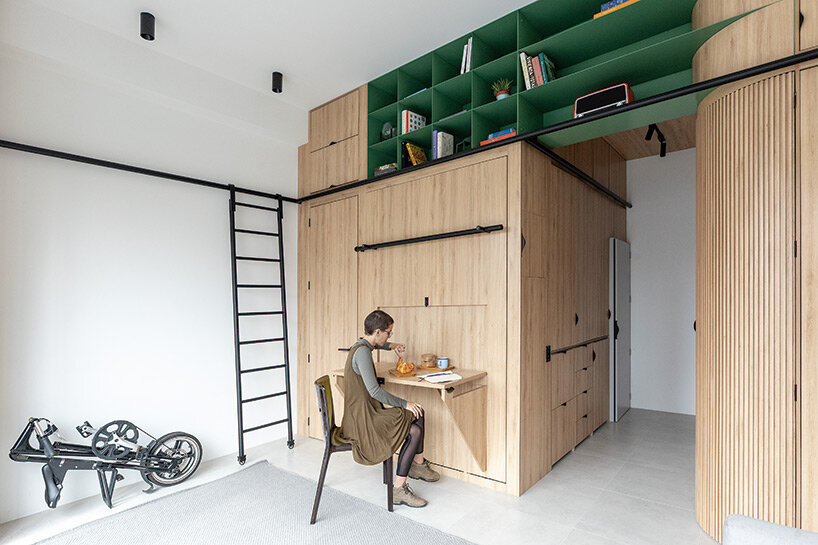
Doméstico – Microliving by Juan Alberto Andrade and María José Váscones transforms into entire artifacts
all images courtesy of JAG studio
photography by JAG studio
Located in a 27,5 sqm mini studio inside Moshe Safdie & Uribe Schwarzkopf’s Qorner building in Quito, Ecuador, Doméstico – Microliving touches on spatial and formal limitations through architectural strategies. As a new way of living is introduced, urban and social mobility become directly related. With this project, Juan Alberto Andrade and María José Váscones refers to a habitable artifact that allows the condensing of everyday activities into one organizing element that transforms easily, without sacrificing comfort.
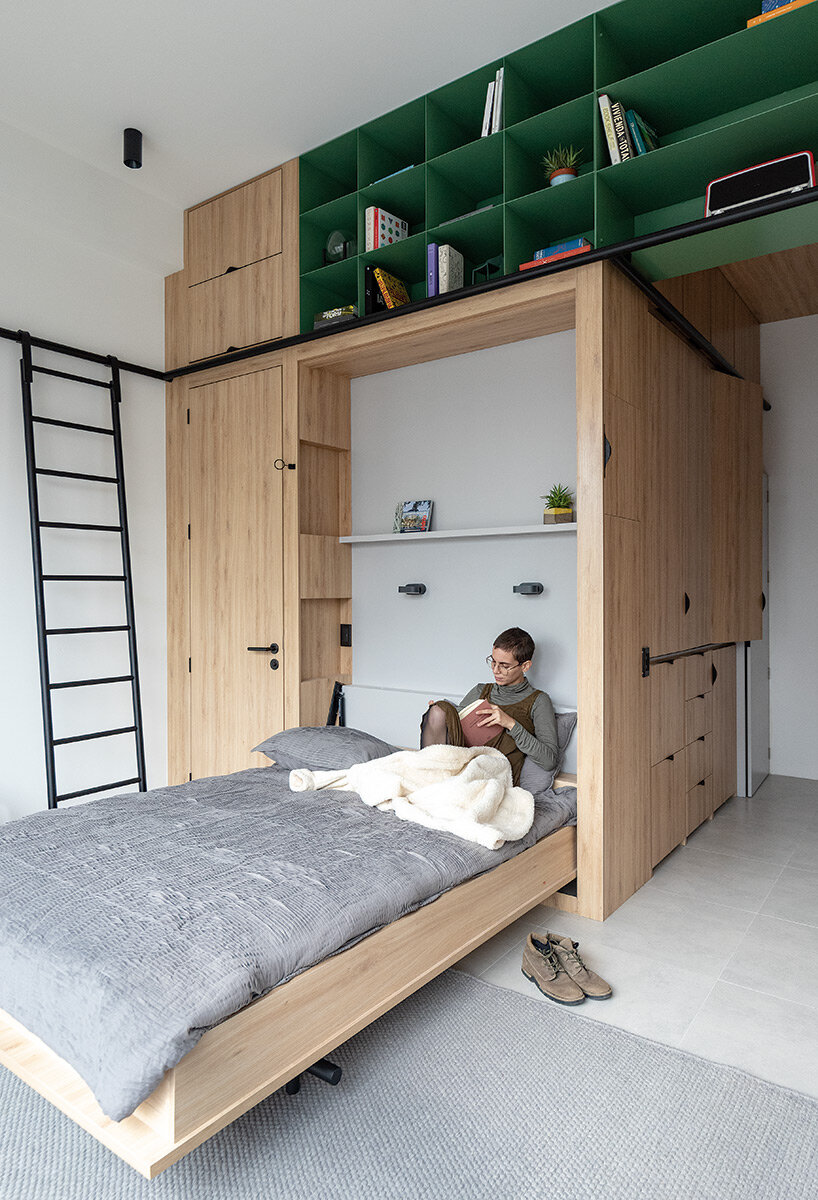
Doméstico refers to a habitable artifact that allows the condensing of everyday activities into one organizing element that transforms easily, without sacrificing comfort.
the area is divided into two parts: activities & free space
The shape, orientation, and functions are conditioned by the geometry of the space, the relation with visuals, as well as the location of the building’s installations. This results in the design of a floor to ceiling design, that is able to divide the space into two areas: the part that holds activities, services, and equipment; and the remaining space is free of elements. To summarize the living needs, different scenarios were analyzed for adaptability, including a kitchen area, storage space, laundry room, bed/bedroom, library, desk/dining table, bar, and the closet.
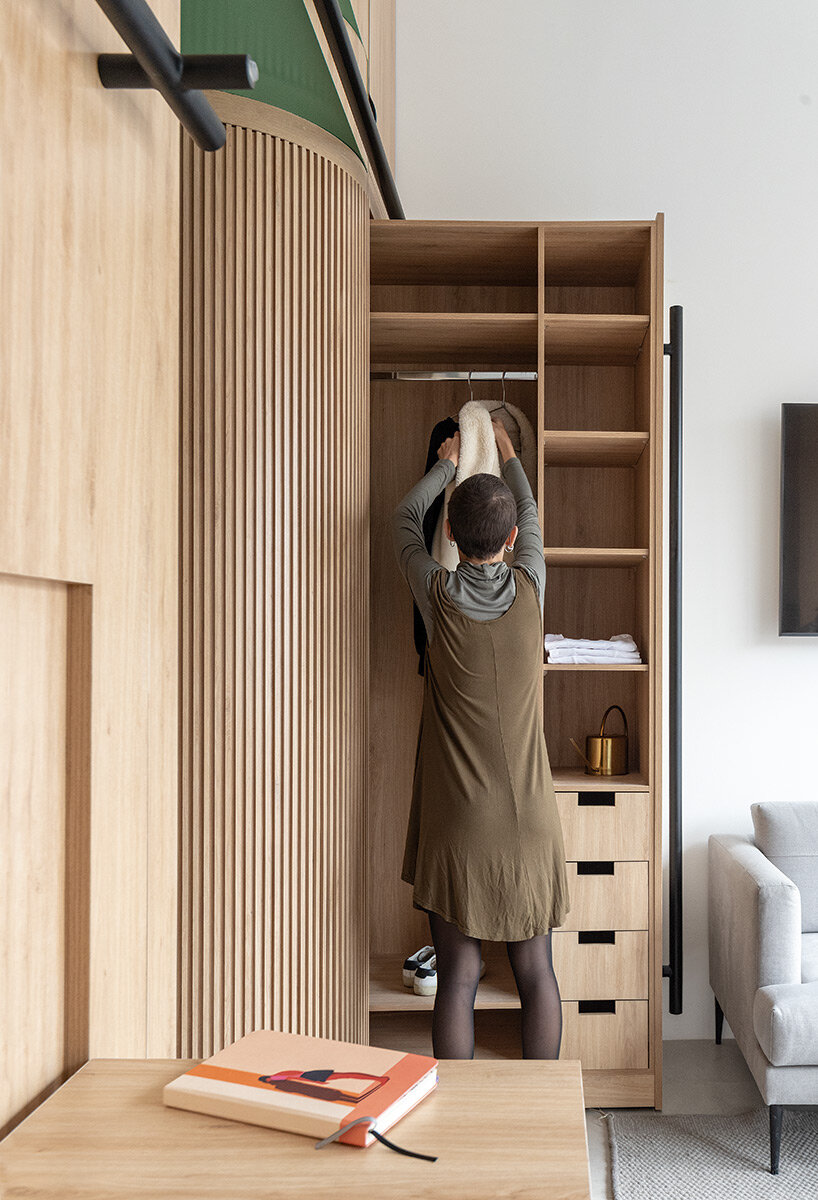
through the project, urban and social mobility become directly related
The object holds various uses under a single shape & material
Every single one of these modules is organized through a horizontal axis that divides the object itself into two parts; the lower area for everyday activities, and the upper module for storage, which is at reach through a mobile ladder. The flexible object holds different possibilities under a single shape and material, as independent modules that relate to specific uses solve the needs.
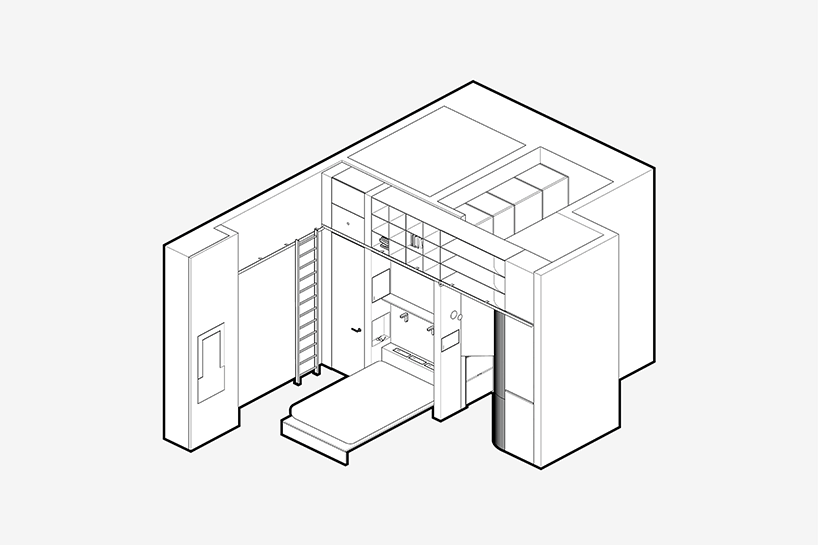
independent modules relate to specific uses and functions
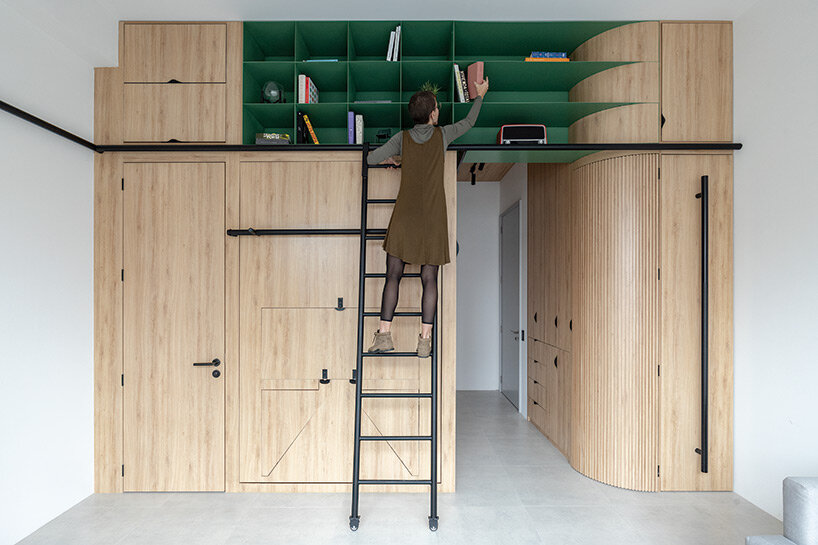
the upper module for storage is at reach through a mobile ladder
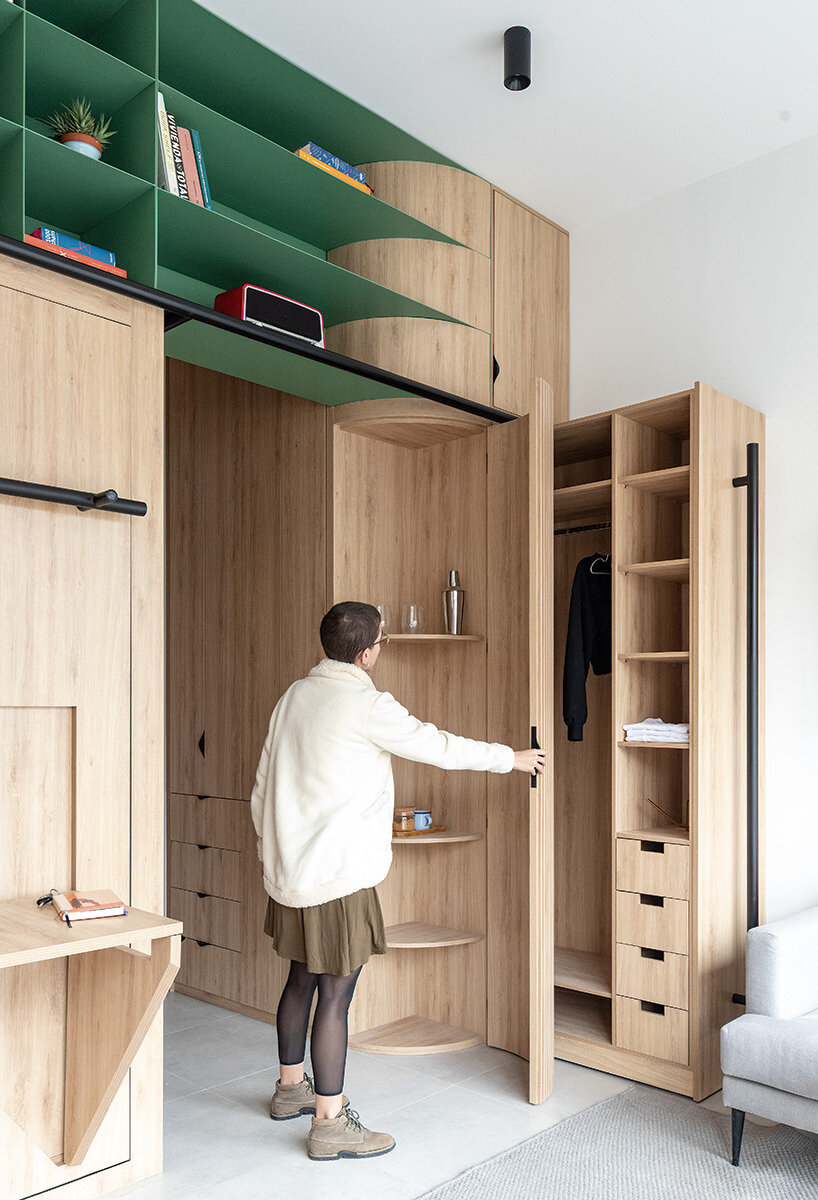
the flexible object holds different possibilities under a single shape and material
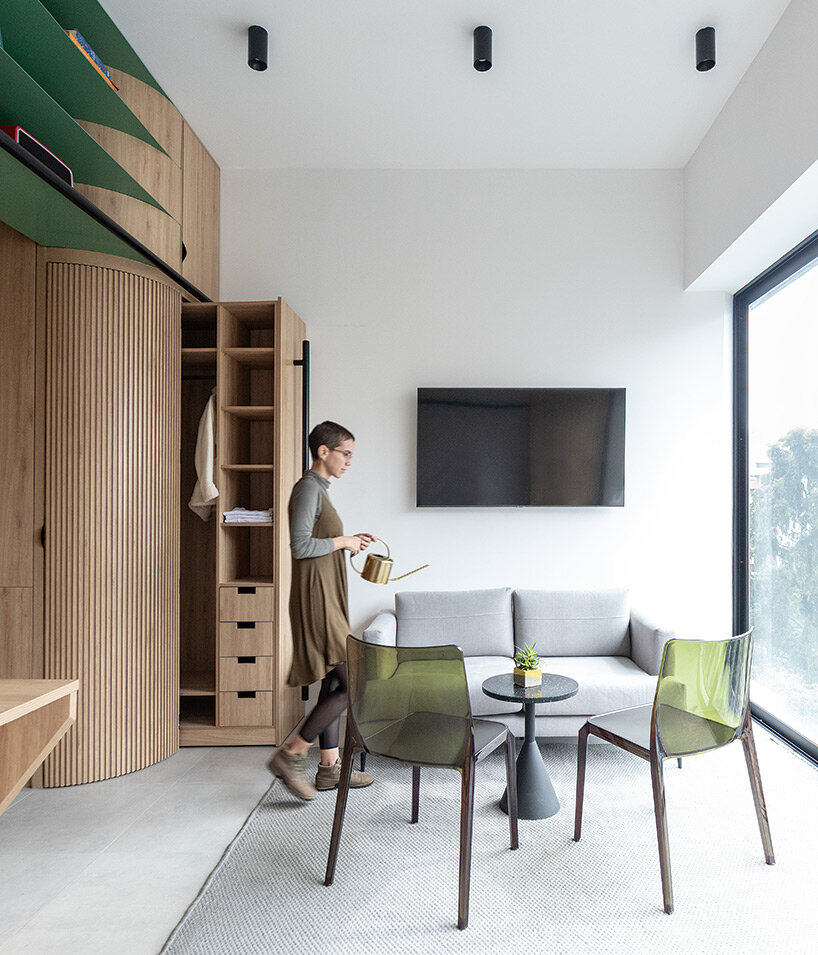
Doméstico divides the space into two areas

